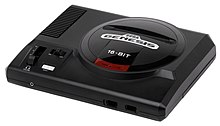
The Genesis Nomad, also known as Sega Nomad, is a handheld game console manufactured by Sega and released in North America in October 1995. The Nomad is a portable variation of the Sega Genesis home video game console. It could also be used with a television set via a video port. It was based on the Mega Jet, a portable version of the home console designed for use on airline flights in Japan.

Comix Zone is a 1995 beat 'em up video game developed and published by Sega for the Genesis. It is set within the panels of a comic book with dialogue rendered within talk bubbles and sprites, and backgrounds possessing the bright colors and dynamic drawing style of superhero comics. This style is in previous video games, for example Ocean Software's Batman: The Caped Crusader in 1988, but Comix Zone stretched the idea to such an extent that Sega applied for and was granted a patent for a "videogame system for creating a simulated comic book game".
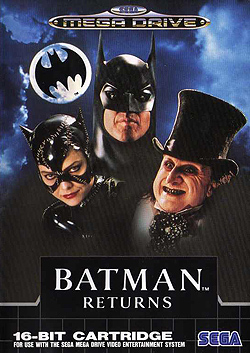
Batman Returns is the name of several video games for various platforms based on the 1992 film of the same name.

X-Men: Children of the Atom is an arcade game developed and published by Capcom and released on the CP System II arcade hardware in 1994 in Japan and in 1995 in North America and Europe.
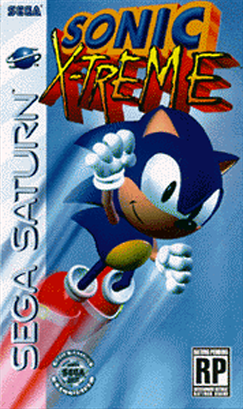
Sonic X-treme was a platform game developed by Sega Technical Institute from 1994 until its cancellation in 1996. It was planned as the first fully 3D Sonic the Hedgehog game, taking Sonic into the 3D era of video games, and the first original Sonic game for the Sega Saturn. The storyline followed Sonic on his journey to stop Dr. Robotnik from stealing six magic rings from Tiara Boobowski and her father. X-treme featured open levels rotating around a fixed center of gravity and, like previous Sonic games, featured collectible rings and fast-paced gameplay.

The Sega Genesis, known as the Mega Drive outside North America, is a 16-bit fourth generation home video game console developed and sold by Sega. It was Sega's third console and the successor to the Master System. Sega released it in 1988 in Japan as the Mega Drive, and in 1989 in North America as the Genesis. In 1990, it was distributed as the Mega Drive by Virgin Mastertronic in Europe, Ozisoft in Australasia, and Tectoy in Brazil. In South Korea, it was distributed by Samsung Electronics as the Super Gam*Boy and later the Super Aladdin Boy.
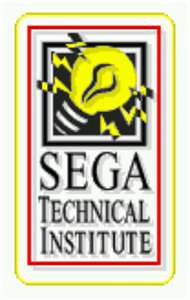
Sega Technical Institute (STI) was an American video game developer owned by Sega. Founded by the Atari veteran Mark Cerny in 1990, STI sought to combine elite Japanese developers, including the Sonic Team programmer Yuji Naka and his team, with new American talent. STI developed games for Sega Genesis, including several Sonic the Hedgehog games, before it was closed at the end of 1996.

X-Men 2: Clone Wars is a 1995 platform game developed by Headgames and released by Sega of America for the Mega Drive/Genesis as a sequel to the 1993's X-Men. The game is based on the adventures of the Marvel Comics superhero team, the X-Men. A sequel, titled X-Women, was cancelled.

The Adventures of Batman & Robin is a series of video game adaptations released between 1994 and 1995 featuring the DC Comics characters Batman and Robin based on Batman: The Animated Series. The games were released for numerous platforms, with the Genesis, Game Gear, and Sega CD versions published by Sega while the Super NES version was published by Konami.
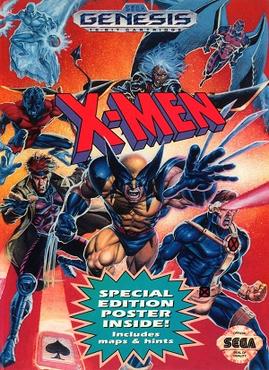
X-Men is a home console video game produced by Sega for Sega Genesis in 1993, based on the adventures of the Marvel Comics superhero team, the X-Men. One or two players can play as any of four pre-chosen X-Men. X-Men was released in 1993 and was followed up by X-Men 2: Clone Wars.
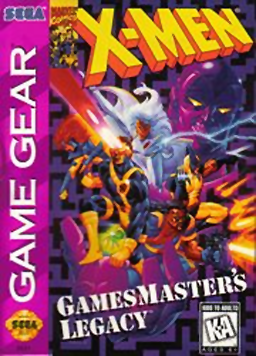
X-Men: Gamesmaster's Legacy is an action game released in 1995 on the Game Gear. The game starts off with Cyclops and Storm as playable X-Men, although Wolverine, Gambit, Rogue, Bishop, Jean Grey, and Cable can be later unlocked. It is loosely based on the "Upstarts" and "X-Cutioner's Song" storylines that took place in the comics. It is the sequel to the original X-Men Game Gear game.

Joe Montana Football is an American football video game developed by Park Place Productions, and published by Sega for the Genesis in 1991. While the game does feature Joe Montana as a playable character, Sega did not obtain licenses from either the National Football League or the National Football League Players Association (NFLPA), meaning no other players, nor any official team names, are used. It was the first of many Sega published football games across the 1990s prior to moving into the NFL 2K branding in the 2000s.
X woman or variations thereof may refer to:

Sega Corporation is a Japanese multinational video game company and subsidiary of Sega Sammy Holdings headquartered in Shinagawa, Tokyo. It produces several multi-million-selling game franchises for arcades and consoles, including Sonic the Hedgehog, Angry Birds, Puyo Puyo, Super Monkey Ball, Total War, Virtua Fighter, and Yakuza. From 1983 until 2001, Sega also developed its own consoles.
As the Sonic the Hedgehog series of platform games has grown in popularity, its publisher Sega has expanded the franchise into multiple different genres. Among these are several educational video games designed to appeal to young children. The first attempt to create an educational Sonic game was Tiertex Design Studios' Sonic's Edusoft for the Master System in late 1991, which was canceled despite having been nearly finished. When Sega launched the Sega Pico in 1994, it released Sonic the Hedgehog's Gameworld and Tails and the Music Maker for it. Orion Interactive also developed the 1996 Sega PC game Sonic's Schoolhouse, which used a 3D game engine and had an exceptionally large marketing budget. In the mid-2000s, LeapFrog Enterprises released educational Sonic games for its Leapster and LeapFrog Didj.

Ghostbusters is a 1990 platform shoot 'em up video game developed and published by Sega for the Sega Genesis/Mega Drive. It features an original story based on the Ghostbusters films, and is unrelated to a 1984 Ghostbusters game by Activision. The game was released in the United States in August 1990, and was released in the United Kingdom later that year. A Brazilian version by Tec Toy was released for the console in 1991.

